The educational materials listed on this page are about Soil Management.
Soil management encompasses a number of strategies used by farmers and ranchers to protect soil resources, one of their most valuable assets. By practicing soil conservation, including appropriate soil preparation methods, they reduce soil erosion and increase soil stabilization. These soil conservation methods allow for healthy soil formation, soil fertility and favorable soil composition, including soil permeability and soil porosity, which lead to increased soil health. Soil organic matter is a critical component of soil health. Cover crops can help maintain or increase soil organic matter. By using a variety of soil management practices, soil organic matter will increase while soil erosion will decrease, keeping soil nutrients on the farm. Farmers typically use a soil analysis, or soil sampling procedure, to determine what inputs are needed. Key practices include composting, soil chemistry, nutrient mineralization, soil quality/health, organic matter, cover crops, green manures, soil analysis, soil microbiology, soil physics.
Showing 1-9 of 9 results
Introduction to Ecological Outcomes Verification: Short-Term Monitoring
This Michigan State University course is designed to teach the foundations of short-term monitoring through the use of Ecological Outcomes Verification (EOV). EOV is a practical and scalable soil and landscape assessment methodology that tracks outcomes in biodiversity, soil health, and ecosystem function (water cycle, mineral cycle, energy flow and community dynamics). EOV applies to […]
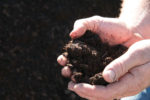
Manure Composting Video Series
Composting manures is becoming an increasingly popular option for farmers.
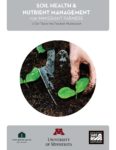
Soil Health and Nutrient Management for Minority Farmers: a Train-the-Trainer Workshop
With support from SARE, a team of researchers, educators, and producers in Minnesota developed a soil health and cover cropping handbook as a train-the-trainer resource for educators, mentors, and community leaders working with immigrant and minority growers.

Sustainable Agriculture Learning Modules for High School Agriculture
Established with the aid of a NCR-SARE Professional Development grant, these Sustainable Agriculture Learning Modules from the University of Nebraska-Lincoln were created to offer insight into what sustainability within agriculture actually looks like.
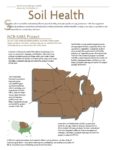
Soil Health
Healthy soil is essential for maintaining efficient growth, fertility, and water quality in crop production. SARE has supported advances by producers, researchers, and educators as they examine the on-farm benefits of using cover crops, crop rotation, manure amendments, composting, and more.
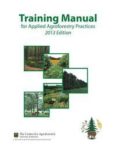
Training Manual for Applied Agroforestry Practices
The Training Manual for Applied Agroforestry Practices helps to explain agroforestry practices and their applications. It is designed for natural resources professionals and landowners, and includes worksheets and exercises for use as an educational tool. Additionally, the manual is designed to assist in the decision process so that, when established or managed, the agroforestry practice is most effective at achieving the desired objectives.

Handbook for Agroforestry Planning and Design
The steps provided in the Handbook for Agroforestry Planning and Design will allow you to identify what agroforestry products can grow on your land, which of these products you can sell profitably, and how to develop basic business and marketing strategies.
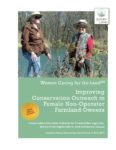
Women Caring for the Land: Improving Conservation Outreach to Female Non-Operator Farmland Owners Curriculum Manual
With the help of an NCR-SARE Research and Education Grant and funding from other sources, WFAN developed an award winning curriculum called Women Caring for the LandSM (WCL), which is designed to serve female non-operator landowners who are interested in learning more about conservation and other land management topics. The materials are also appropriate to teach youth about sustainable agriculture through hands-on conservation activity lesson plans.
Women Caring for the Land: Cover Crops Booklet
Women landowners say that they want their family farms to remain healthy and productive for future generations. But many feel they don't have all the information they need to protect their land. This booklet introduces cover crops as an option, one of the simplest techniques to try with the most visible benefits.